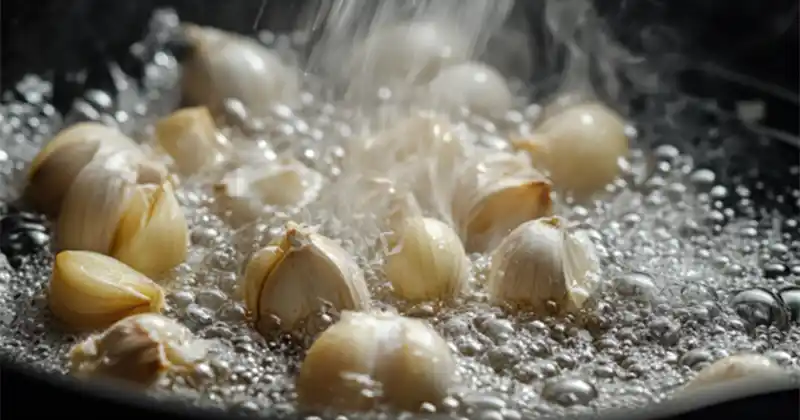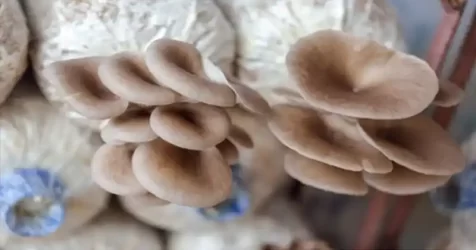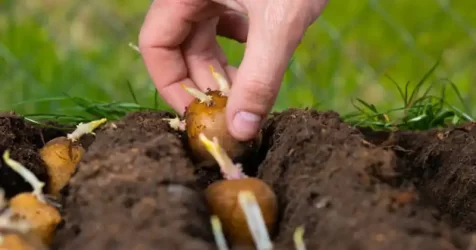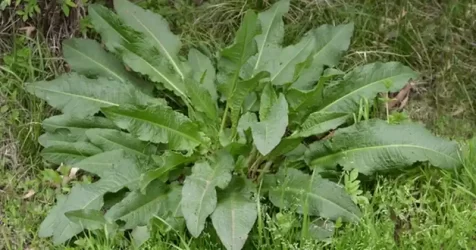Boiling Garlic for Natural Plant Protection: A Simple and Effective DIY Solution

Using natural methods for plant protection is becoming increasingly popular among gardeners who want to avoid harsh chemicals. Garlic, with its powerful antibacterial and antifungal properties, is an excellent ingredient to help safeguard your plants. This simple DIY method of boiling garlic to create a natural insecticide can be an effective way to keep pests at bay while nurturing your plants with minimal environmental impact.
Why Use Garlic for Plant Protection?
Garlic has been used for centuries not just in culinary applications but also in agriculture. Its natural compounds, such as sulfur and allicin, are known to deter pests and protect plants from diseases. These compounds work by disrupting the nervous systems of insects and pathogens, making garlic an effective deterrent without harming the plants or the environment.
Benefits of Garlic as a Natural Insecticide
- Eco-friendly: Unlike chemical pesticides, garlic spray is non-toxic and biodegradable, posing no harm to soil, beneficial insects, or humans.
- Cost-effective: Garlic is inexpensive and readily available in most households, making this a low-cost solution.
- Versatile: It can help deter a variety of pests, including aphids, ants, spider mites, and slugs.
- Fungicide Properties: Garlic has been shown to help fight against fungal infections like powdery mildew and downy mildew.
DIY Garlic Spray: Step-by-Step Guide
Making your own garlic spray is quick and easy. Here’s how you can do it in a few simple steps:
Ingredients:
- 5-6 garlic cloves
- 1 liter of water
- A pot for boiling
- Strainer
- Spray bottle
Instructions:
- Prepare the Garlic: Start by peeling 5-6 cloves of garlic. Crush them lightly to release the active compounds. Crushing the garlic is important because it activates the allicin, which gives garlic its insecticidal properties.
- Boil the Garlic: Add the crushed garlic to a pot with 1 liter of water. Bring the mixture to a boil, then reduce the heat and let it simmer for 10-15 minutes. Boiling the garlic helps extract the beneficial compounds while ensuring that the mixture is potent enough to repel pests.
- Cool and Strain: Once the boiling is done, remove the pot from heat and allow it to cool completely. Strain the liquid through a fine mesh or cheesecloth to separate the garlic pieces from the water. The strained liquid is now your concentrated garlic spray.
- Transfer to Spray Bottle: Pour the garlic water into a spray bottle for easy application. For best results, you may want to dilute the mixture slightly with water, especially if you’re using it on tender plants.
How to Use Garlic Spray
Once your garlic spray is ready, it’s time to use it! Follow these guidelines for effective pest control:
- Test on a Small Area First: Before applying to the entire plant, test the spray on a small leaf to make sure it doesn’t cause any damage, especially if the plant is delicate.
- Apply During Early Morning or Evening: Spraying during these times helps avoid the sun’s heat, which can cause the spray to burn plant leaves.
- Target Problem Areas: Focus on areas where pests are most concentrated, such as the undersides of leaves or along plant stems.
- Reapply Regularly: For continuous protection, apply the garlic spray every 7-10 days or after rainfall, as water can wash away the spray.
Other Natural Additives to Boost Effectiveness
While garlic is potent on its own, combining it with other natural ingredients can further enhance its protective abilities.
- Neem Oil: Adding a few drops of neem oil to your garlic spray increases its effectiveness against a wider range of insects and provides added antifungal benefits.
- Cayenne Pepper: For extra pest deterrence, mix a teaspoon of cayenne pepper with the garlic spray. The capsaicin in cayenne pepper irritates insects, driving them away from your plants.
- Dish Soap: A few drops of mild dish soap can help the spray stick to the leaves, prolonging its protective effect.
Conclusion
Boiling garlic for plant protection is a simple yet powerful method that can be incorporated into any gardener’s routine. It’s safe for the environment, cost-effective, and highly effective against common pests and fungi. By making your own garlic spray at home, you can enjoy a chemical-free garden while protecting your plants from harmful insects and diseases.
Give this method a try, and you’ll see how a simple clove of garlic can be a game-changer for your garden’s health and vitality.



















